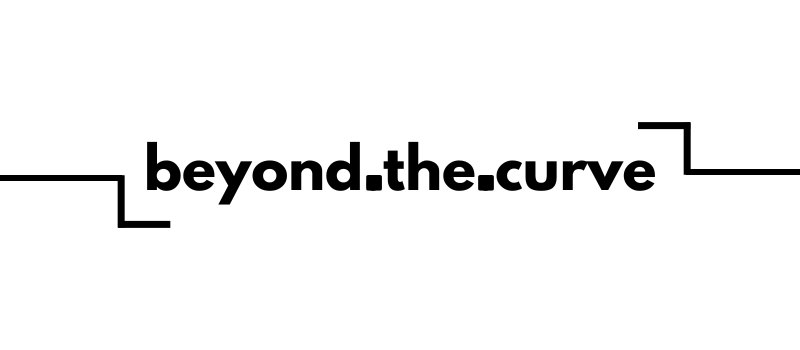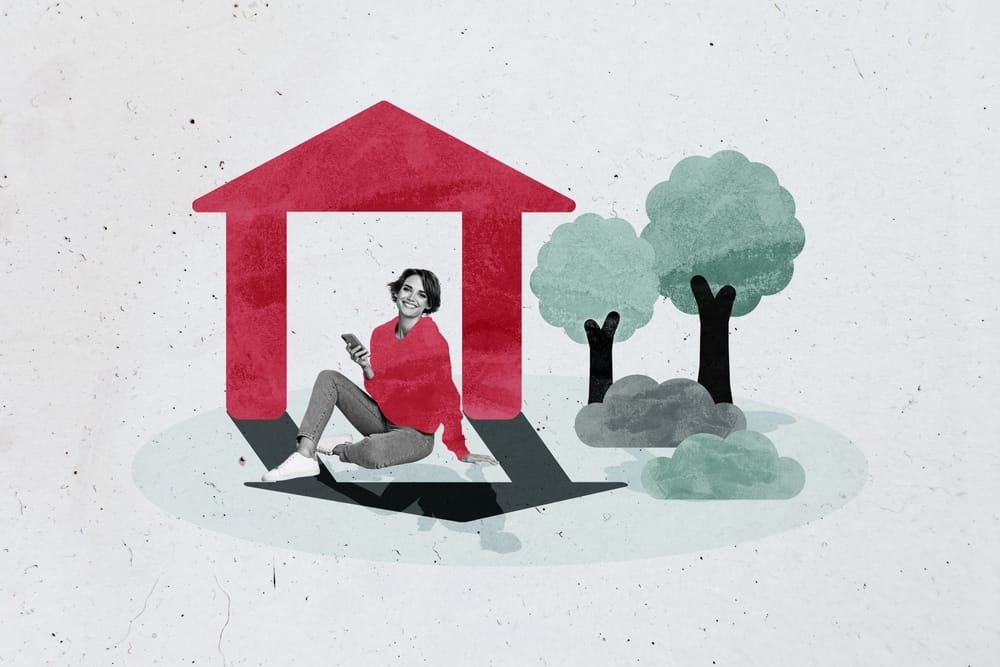
Welcome, prop.text readers!
In issue 37, we cover the spooky real estate investment world of ghost towns.
publicly.traded → Ghost towns in the old west
industry.chatter → Government shut down impacting transactions
beyond.the.curve → Housing starts, active listings and inventory


Ghost Towns Evoke Romance of the Old West
Buying a ghost town might sound like a really cool idea — why purchase an overpriced house in some suburb when you can purchase a whole town for $100,000?
That’s what Lobo, Texas, fetched in 2023 when three Germans, who had owned its 10 acres and handful of buildings since 2001, sold it after they said they were too old to keep trying to fix it up. They had vacationed there and held art, film and music events over the years. Founded in the 1880s, Lobo, which sits on 10 acres 130 miles southeast of El Paso and 15 miles east of the Rio Grande, was first abandoned in 1991, when the local aquifer ran dry.
From the looks of Lobo in a video that a Texas radio station posted in January of this year, not much of the “town” appears move-in ready. There is no word on what the new owners intend to do, the station reported.
But whatever it is, “it’s going to be a passion project,” said Jake Rasmuson, a real estate agent in Bishop, Calif., who has sold several properties that fall into the ghost town category. (“I’ve done some ghost, town work, yeh,” he admitted, a bit sheepishly.)
He was the listing agent for Cerro Gordo, a 360-acre property that listed for $900,000 but ultimately sold for $1.45 million after a bidding war. He also sold the Hard Luck Castle and Mine, a ghost town in Northern Nevada, which is now offered on Airbnb for about $1500 a night. He also sold the ghost town of Swansea, Calif., a former silver smelting post that is a long and bumpy car ride from civilization at the edge of the Mojave Desert and is more of a destination for history buffs.
Rasmuson said Hard Luck Castle shows some promise with its unique rental property, which sits atop an abandoned gold mine, “but is it a ghost town?” he said. “Well maybe not, but it has that Old West Feeling.”
If you are looking beyond the Wild West experience, Love Property has listings for properties ranging from abandoned Spanish fincas (a group of farm houses) that list for a little less than $90,000, to several traditional Romanian villages for about $878,000, to a town in California for $6.6 million to a ranch in New Zealand that is a replica of a Wyoming frontier town (price negotiable).
Though there was a lot of interest when he sold Cerro Grande and other properties, ghost towns are not exactly in-demand real estate investments, according to Rasmuson. “There’s no ghost town flipping going on.” (California and Texas lead the country in ghost towns, with 100-350 and 500-900 respectively, depending on the definition.)
The buyer of Cerro Gordo, Brent Underwood, has been living there for the last five years and has spent his time rehabbing the buildings and exploring the old silver mines. In one video, Underwood says the mine produced some $500 million worth of silver and the town supported thousands of residents. He’s even set up a museum with artifacts he’s recovered from the mine and around the town, and written a book about his experiences: “Ghost Town Living: Mining for Purpose and Chasing Dreams at the Edge of Death Valley.”
Underwood financed half the $1.45 million purchase with a hard money loan, his own money and some from a friend, along with the contributions of other friends. Living 8 miles up a rough dirt road from the nearest town without flushing toilets at the edge of Death Valley has not been an easy experience.
“It can be very lonely and isolating living in the middle of nowhere,” he told Business Insider last year. “On Saturday, all my friends probably went to lunch together in Austin, but right now, I'm sitting 900 feet under a ghost town that's miles away from them.” (Underwood ran a successful B&B in Austin before he bought the town.)
T. Lindsay Baker, a retired history professor at Tarleton State University and author of “Ghost Towns of Texas” and “More Ghost Towns of Texas”, told Texas Highways magazine:
“A ghost town is a town for which the reason for being no longer exists.”
Baker offered these criteria for inclusion in his travel guide:
There must be some surface-level archeology. “It’s no fun to drive out to what turns out to be a paved parking lot,” he says.
The town has to offer public access.
There must be even geographic distribution, so wherever you are in Texas, you can easily visit a town on a day trip.
A population of fewer than 100 people is a good rule of thumb.
Underwood has not made any money off Cerro Gordo, but he says he has found his purpose in life: working to preserve its history. “I'm hoping one day to reopen its hotel and, eventually, have a campsite and cabins for visitors to stay in overnight,” he said last year.
Rasmuson said there is a lot of fascination with the Old West, not just in the states but around the world.
“When we first sold the town we did some interviews with news organizations out of Japan and Mexico,” he said. “And I asked them why they were interested and they said the romance of the Old West.”
Despite the attention and the romance, investors should probably look elsewhere for favorable ROI.
“We had a significant amount of interest,” Rasmuson added, “but I just don’t see it as a viable means for a real estate investment.”

A tower on billionaires’ row overlooking New York City’s Central Park is full of cracks and needs repairs that could cost up to $100 million that need to be done or the building could eventually become uninhabitable or endanger pedestrians, The New York Times reported. Some of the world’s wealthiest buyers paid tens of millions for the apartments in the 102-floor tower near 57th Street, and within months they were complaining about water seeping through some ceilings, the elevators breaking down and living rooms swaying in the wind.
The government shutdown is jeopardizing thousands of home transactions by limiting access to insurance coverage for buyers in flood-prone areas, and cost the already struggling housing market billions of dollars in delayed contract closings, data showed on Tuesday. The report from HomeAbroad, a real estate investment technology platform, estimated that about 3,619 home closings were at risk nationwide daily, meaning a loss of $1.59 billion based on the current $439,278 median home price. States like Maryland, Virginia, North Carolina and Florida are particularly impacted.
Buyers are looking for homes that need work these days, according to data from Realtor.com, which reported that keyword searches for "fixer-upper" have more than tripled since 2021, even as those listings become scarcer. These older and smaller homes in need of renovations offer a more affordable entry point for first-time buyers and the chance to profit for flippers. The median fixer-upper was priced at $200,000 as of July, less than half the $436,250 median for all single-family homes. These homes are more available in areas where homes are older and there's less new construction such as Syracuse, New York; Toledo, Ohio; and New Orleans.
Just Because
Aside from her acting chops, Diane Keaton, the daughter of a real estate agent, was a skilled and inveterate house flipper. She told friends that in some years she made more money in real estate than she did from acting, and a review of her golden touch when it comes to buying and renovating homes makes that obvious. House Beautiful has a partial list of the some 50 homes Keaton fixed up, and her stamp could bring as much as a 30% premium to a home. “She’s quirky. She’s interesting. You can tell she has this authenticity,” Frank Langen, a Compass real estate agent representing the seller of the Rustic Canyon home designed by Lloyd Wright — son of Frank Lloyd Wright — that she renovated and flipped, told The New York Times.

10-Year U.S. Treasury Yield: ~ 3.98%, ↓ from ~4.00% two weeks ago | Lower yields ease long-term borrowing/mortgage cost pressures. |
Listings ≥ 60 Days on Market (“Stale” Inventory): ~ 44% of listings (≈ $331 B) as of recent data | A high proportion of old listings suggests buyers are in stronger negotiation position. |
Existing Home Inventory (Units): ~ 1.53 million units (existing home inventory) | Inventory elevated vs prior year (+11.7% YoY) — more supply gives buyers leverage. |
Median List Price (September 2025): $425,000, virtually unchanged YoY; South & West showing slight declines | Suggests price growth is largely flat now; some regional softness emerging. |
Baselane raises $34.4 million in a Series B & extension (Oct 2nd) | Baselane to continue to build out its fintech platform for landlords. |

(Jobs section will return next issue)
Home insurance rates up by 76% in some states
Over the last 6 years, home insurance rates have increased by up to 76% in some states. Between inflation, costlier repairs, and extreme weather, premiums are climbing fast – but that doesn’t mean you have to overpay. Many homeowners are saving hundreds a year by switching providers. Check out Money’s home insurance tool to compare companies and see if you can save.
Refer and Earn
You can earn free prop.text merch for referring investors to the newsletter
25 referrals - hat 🧢
50 referrals - tee shirt 👕
100 referrals - weekender bag 🎒
Copy & paste this link: {{rp_refer_url}}

